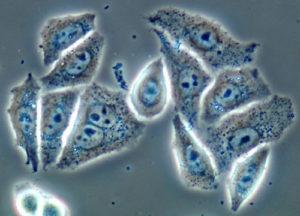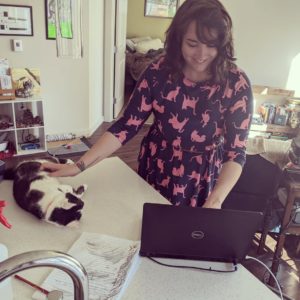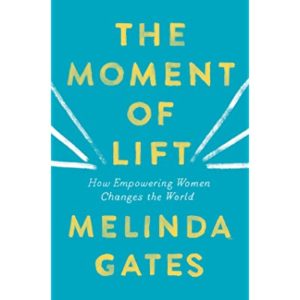From the beginning of this transformative text, Tolle explicitly articulates that the purpose of the book is to bring a shift in consciousness and to awaken us as individuals and communities. Identifying ego as the root of the dysfunction, insanity, and suffering that we experience as humans, Tolle clearly advocates that invoking awareness, or Presence, is both the alternative and solution to ego. He affirms, “The dysfunction of the egoic human mind, recognized already more than 2,500 years ago by ancient wisdom teachers and now magnified through science and technology, is for the first time threatening the survival of the planet.” In almost apocalyptic language, he affirms that we have a stark choice ahead of us: evolve (with awareness) or die.
Emphasizing the limitations of existing poetics and thought, especially in the West, which he describes as “the most mind-dominated of all cultures,” the inauthenticity and addictive model of ego is elucidated. Reflecting on the status quo, Tolle describes how “The physical needs and basic comforts could be easily met for all humans on the planet, were it not for the imbalance of resources created by the insane and rapacious need for more, the greed of the ego.” Based in existing philosophy and literature, Tolle describes how Descartes expressed the root of ego when writing, “I think therefore I am,” and Jean-Paul Sartre illuminated the alternative to the ego or unconsciousness, when writing, “The consciousness that says ‘I am’ is not the consciousness that thinks.” Tolle defines our true identity as the formless “Consciousness itself. That’s the peace of God. The ultimate truth of who you are is not I am this or I am that, but I AM!”
Oscillating seamlessly between the similarities in the way ego manifests on an individual and collective level, clever strategies like the selective perception and distorted interpretation of the ego are unveiled. Contextualizing the role of the ego in the human experience, he affirms “By far the greater part of violence that humans have inflicted on each other is not the work of criminals or the mentally deranged, but of normal, respectable citizens in the service of the collective ego.” He shows how the ego creates suffering. On an individual level, he explains how “unhappiness is an ego-created mental-emotional disease that has reached epidemic proportions” and has adverse physiological effects on a myriad of body functions and systems. He affirms how “a collective ego manifests the same characteristics as the personal ego, such as the need for conflict and enemies, the need for more, the need to be right against others who are wrong” and so on, and describes how “the collective ego of tribes, nations, and religious organizations also frequently contains a strong element of paranoia: us against the evil others. It is the cause of much human suffering.”
The Ego and the Pain-Body
Tolle also explains how the ego works in tandem with its close relative, the pain-body. The pain-body is the “energy field [that is] an accumulation of old emotional pain” and also exists both on an individual and collective levels. In fact, holding in the emotions and pain suffered in your own life and by “countless humans throughout the history of humanity, which is the history of continuous tribal warfare, of enslavement, pillage, rape, torture, and other forms of violence,” Tolle affirms that this pain still lives in the collective psyche of humanity and is probably encoded in every human’s DNA such that “every newborn who comes into this world already carries an emotional pain-body.” The pain-body, this “psychic parasite” or “addiction to unhappiness,” affects everyone, for, “it is always the case that both victim and perpetrator suffer the consequences of any acts of violence, oppression, or brutality. For what you do to others, you do to yourself.” Framed another way, Tolle importantly notes, “mainstream medicine, although it knows very little about how the ego operates yet, is beginning to recognize the connection between negative emotional states and physical disease.” The ego, and its associated emotions, harms not only your body but also, through a chain reaction, affects and infects countless others you never meet.
To disarm both the ego and pain-body, Tolle insists that “we be present, and, in turn, the associated energy, the pain-body, will transmute into Presence.” He explains how this process has already started and that “we are amidst a momentous event in the evolution of the human consciousness,” as “consciousness is awakening” and “can now begin to create form without losing itself in it.” As humans, we share an inner purpose which is to awaken. We “share that purpose with everyone other person on the planet – because it is the purpose of humanity. It is an essential part of the purpose of the whole, the universe and its emerging intelligence.” This evolutionary advancement happens in the present as more people awaken and discover that their main purpose in life is to bring the light of consciousness into this world. It is through this process that an awakened consciousness that is aligned with the universe then takes over from ego. As Tolle reflects, “peace, after all, is the end of the ego.”
In many ways, this book uniquely pushes classic public health epistemology and research methods. Employing a truly transdisciplinary approach,12 Tolle elucidates how “human intelligence, which is no more than a minute aspect of universal intelligence, has been distorted and misused by the ego” and how thinking, an unconscious process associated with the ego, “cuts reality up into lifeless fragments.” For example, while there are accepted ways to determine causality, such as Bradford Hill’s criteria ((Hill AB. The environment and disease: association or causation? In: Sage Publications; 1965.)) and Kenneth Rothman sufficient-component cause model,3 Toll affirms, “The causes of even the smallest events are virtually infinite and connected with the whole in incomprehensible ways.” In fact, he echoes and magnifies Rothman’s reflection: “All of the fruits of scientific work, in epidemiology or other disciplines, are at best only tentative formulations of a description of nature, even when the work itself is carried out without mistakes.”3 In the same way that regression models do not perfectly predict and causal models include unknown factors, Tolle states:
Nothing we say about the nature of the universe should be taken as an absolute truth. Neither concepts nor mathematical formulae can explain the infinite. Reality is a unified whole, but thoughts cut it up into fragments. This gives rise to fundamental misperceptions.
Arguably more importantly, Tolle challenges our conceptualization of risk and causal factors by suggesting that ego and its associated forms, like thought and emotion, could be the etiology of disease and suffering. Most significantly, however, Tolle intentionally employs a whole-person wellness4 and/or integrative medicine5 public health approach that inclusively acknowledges consciousness, “the traditional word for which is spirit,” into public health discourse.
While an important and novel contribution to the existing literature of public health, this book is written to catalyze an internal process of awakening for an individual. In addition to thoughtful advice on self-care, self-actualization, self-growth, and all types of relationships, there are tangible activities in which to engage and mantras on which reflect. Therefore, this book primarily should be read by someone looking for a transformational experience, someone seeking to live a more awakened and conscious life. Secondarily, it offers unique insight that may prove helpful in identifying and expanding public health epistemology so that it is as inclusive as possible when discussing individual and communal wellness.
- A New Year, A New Needed Perspective - November 17, 2022
- Navigating the Line Between Discomfort and Uncomfort: Exploring Cultural Immersion - November 2, 2022
- Locating Eckhart Tolle’s “A New Earth” Within Current Public Health Epistemology: A Book Review - October 12, 2022
- Transdisciplinary Approaches for Public Health. Epidemiology. 2000;11(4):S122. [↩]
- Lawlor EF, Kreuter MW, Sebert-Kuhlmann AK, McBride TD. Methodological innovations in public health education: Transdisciplinary problem solving. American journal of public health. 2015;105(S1):S99-S103. [↩]
- Rothman KJ, Greenland S, Lash TL. Modern epidemiology. 3rd ed. Philadelphia: Wolters Kluwer Health/Lippincott Williams & Wilkins; 2008. [↩] [↩]
- Otto LM, Howerter A, Bell IR, Jackson N. Exploring measures of whole person wellness: integrative well-being and psychological flourishing. Explore. 2010;6(6):364-370. [↩]
- Young C, Koopsen C. Spirituality, health, and healing: An integrative approach. Jones & Bartlett Publishers; 2010. [↩]




